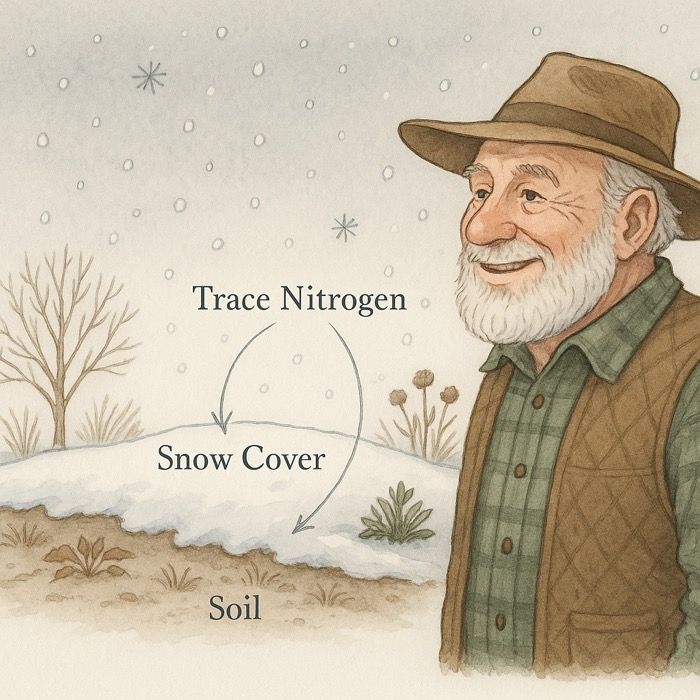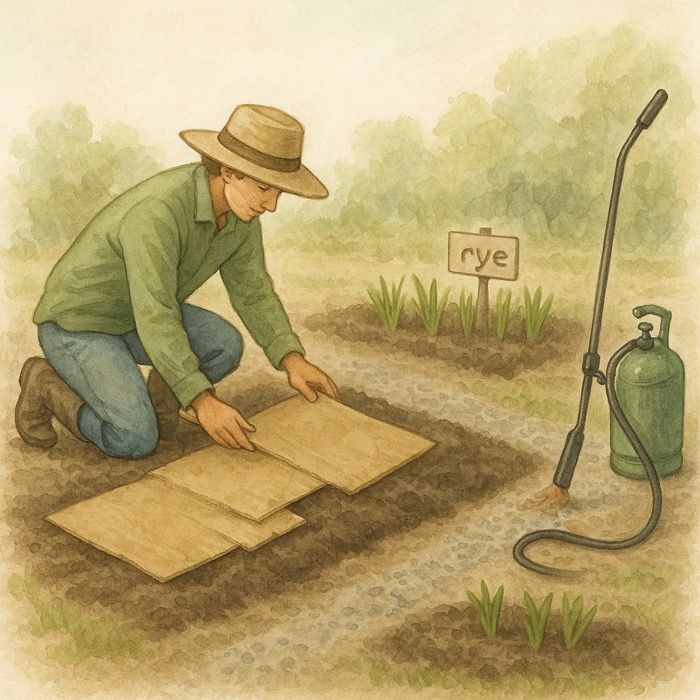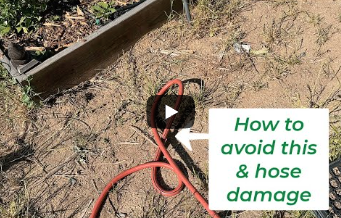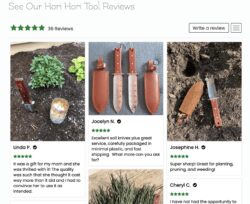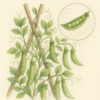Organic Pest and Disease Management for No-Dig Gardens
Effective Natural Solutions for Healthier Plants
No-dig gardening offers a wealth of benefits, not only for soil health and plant productivity but also for managing garden pests and diseases. By creating a stable and resilient ecosystem, no-dig practices help reduce pest and disease pressures without the need for synthetic chemicals. In this post, we’ll explore how no-dig gardening naturally supports plant health and resilience and highlight some of the best organic pest and disease management techniques that work in harmony with this sustainable method.
What is No-Dig Gardening, and How Does it Help with Pest & Disease Control ?
No-dig gardening is a method that focuses on building up the soil with organic materials like compost and mulch, rather than tilling or disturbing it. This approach minimizes soil disruption, preserving beneficial organisms like earthworms, fungi, and microbes that play essential roles in soil health and plant resilience.
When soil structure remains intact, it supports a healthy, biodiverse environment where beneficial organisms can thrive. This biodiversity naturally suppresses pests and diseases, creating a balanced ecosystem that doesn’t rely on chemical interventions. Here’s why no-dig gardening is so effective for natural pest and disease control:
- Enhanced Soil Health – By enriching soil with organic matter and avoiding tillage, plants grow stronger and are more resistant to pests.
- Increased Biodiversity – A diverse ecosystem, both in the soil and above ground, helps naturally suppress pest populations.
- Reduced Weeds and Pest Habitat – Mulching suppresses weeds and eliminates habitats where pests could otherwise thrive.
- Minimal Soil Disturbance – Avoiding soil disturbance prevents the spread of pathogens, while beneficial microbes and fungi remain active to help plants fight disease.
Organic Pest and Disease Management Strategies for No-Dig Gardens
For gardeners who prefer to maintain a chemical-free, natural approach, there are several organic pest and disease management techniques that align with the principles of no-dig gardening. These strategies not only support plant health but also encourage biodiversity, essential for a thriving garden ecosystem.
- Encourage Beneficial Insects and Predators 🐞🌼 One of the most powerful tools for organic pest control is beneficial insects. Attracting these natural predators helps keep pest populations in check. Common beneficial insects like ladybugs, lacewings, and parasitic wasps control aphids, caterpillars, and other garden pests without harming your plants.
- How to Attract Them – Plant flowering species like marigolds, alyssum, and dill to invite these helpful insects into your garden. These plants offer nectar and pollen that sustain beneficial insects.
- Companion Planting for Natural Pest Control 🌱 Companion planting leverages natural plant properties to deter pests and improve plant growth. Some plants, like marigolds, release compounds that repel nematodes and other pests, while basil planted near tomatoes can discourage whiteflies.
- Examples of Effective Combinations –
- Marigolds and tomatoes – Marigolds deter nematodes and other soil-borne pests.
- Basil and tomatoes – Basil repels whiteflies and other common pests.
- Mint and cabbage – Mint helps deter cabbage moths and aphids.
- Examples of Effective Combinations –
- Neem Oil and Organic Sprays 🌿 Neem oil is a popular organic pesticide derived from the neem tree. It works by disrupting the feeding and reproductive cycles of pests like aphids, mites, and whiteflies, all without harming beneficial insects when used sparingly.
- How to Use Neem Oil – Mix neem oil with water and apply it to affected areas. Use only as needed, as frequent applications can disrupt beneficial insect populations.
- Other organic pest control sprays include –
- Insecticidal soaps – Safe for plants and effective against soft-bodied pests.
- Diatomaceous earth – A natural powder that dehydrates insects upon contact.
- Garlic sprays – Deters a variety of insects without harming plants.
- Proper Plant Spacing for Airflow 💨 Good airflow is crucial for disease prevention. In a no-dig garden, careful plant spacing allows air to circulate freely, reducing the risk of fungal diseases like powdery mildew and blight.
- Spacing Tips – Check plant-specific spacing guidelines, and avoid overcrowding. Plants should be spaced to allow leaves to dry quickly after rain or watering.
- Mulching for Weed Suppression and Soil Health 🌾 Mulching not only enriches soil but also suppresses weeds and reduces soil-borne diseases. In a no-dig garden, mulch acts as a natural barrier that prevents soil from splashing onto plant leaves, which can spread disease.
- Mulch Types – Organic mulches, such as straw, wood chips, or compost, offer the best results in no-dig gardens. They suppress weeds while adding nutrients to the soil as they decompose.
- Crop Rotation to Disrupt Pest and Disease Cycles 🔄 Rotating crops each season helps prevent pest and disease build-up, especially in no-dig systems where soil isn’t disturbed. Moving crops to different areas annually reduces the chances of re-infecting plants with the same diseases or attracting pests.
- Example – Avoid planting tomatoes in the same spot each year to prevent blight. Instead, rotate them with other crops, such as legumes, which enrich the soil with nitrogen.
- Using Trap Crops and Physical Barriers 🚧 Trap crops are sacrificial plants that attract pests away from your main garden crops. For example, planting nasturtiums nearby can attract aphids, protecting nearby vegetables. Physical barriers, like row covers, can also protect plants from pests and birds without the need for sprays.
The Role of Healthy Soil in Natural Pest and Disease Control
The foundation of no-dig gardening is creating rich, healthy soil. Healthy soil improves plant resilience and reduces the likelihood of pest infestations. By building up organic matter with compost, mulch, and natural amendments, no-dig gardeners provide plants with the nutrients they need to grow strong and resist disease.
FAQs About Organic Pest & Disease Management in No-Dig Gardens
- Q: How often should I add mulch in a no-dig garden – A: Mulch should be added seasonally or as it decomposes. A good rule of thumb is to keep a 2-4 inch layer of organic mulch around plants, replenishing it as needed.
- Q: Can I use natural pest sprays in a no-dig garden – A: Yes, organic pest sprays like neem oil and insecticidal soaps are compatible with no-dig gardening. However, use them sparingly to avoid disrupting beneficial insects.
- Q: What is the best companion plant for pest control in no-dig systems – A: Marigolds are highly effective as they deter various pests, including nematodes and aphids. Their roots release a compound that repels many soil-borne pests.
Benefits of Organic Pest & Disease Management in No-Dig Gardens
Embracing organic pest and disease management in your no-dig garden has numerous benefits, including:
- Healthier Plants – Plants that grow in a balanced ecosystem are stronger and more resilient.
- Biodiversity – A no-dig approach creates a home for beneficial insects, which naturally control pest populations.
- Reduced Chemical Use – Organic methods eliminate the need for synthetic pesticides, promoting a safe environment for humans, pets, and wildlife.
Conclusion
Organic pest and disease management in no-dig gardens leverages natural practices that strengthen plants, improve soil, and create a balanced, biodiverse ecosystem. From companion planting and mulching to natural sprays and beneficial insects, these strategies work harmoniously with no-dig principles to keep your garden thriving and pest-free. By incorporating these methods, you’re not only protecting your plants but also contributing to a more sustainable and resilient gardening approach.
More From Our Master Gardener
Recent Posts

❄️ Snow as Fertilizer – The Truth About “Poor Man’s Nitrogen”

5 Unexpected Winter Weed Control Strategies (That Don’t Involve Mulch)

Harnessing Winter Sun – Passive Solar Tricks for Your Garden

How to Grow Spinach – The Ultimate Beginner’s Guide for Tender, Nutritious Leaves

How to Grow Peas: The Ultimate Beginner’s Guide for Sweet, Crisp Harvests


